Selecting the correct deburring method to optimise efficiency
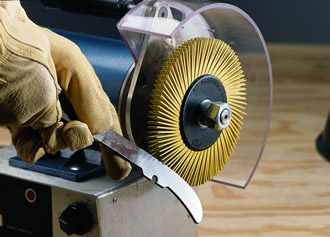
Nigel Willcock, Technical Specialist, Abrasive Systems Division, 3M, looks at how deburring has evolved and how metal finishers can ensure they are selecting the correct deburring method to optimise efficiency.
The science of surface finishing is one that continues to present many challenges for engineers, part manufacturers, technicians and fabricators every single day. One such challenge is the method of deburring. A process that is typically defined by removing a burr, a raised edge of excess material or area of roughness produced in cutting or shaping of metal, which is done by chamfering the edge of the metal to create two smaller sharp edges. The intricacy of the part coupled with demanding material properties are both key obstacles that can make it difficult to find a deburring method that is efficient, both in terms of cost and process.
Most surface finishers carrying out a deburring process, whether it be in a pattern/tool makers or in an aerospace manufacturing workshop, are looking for precise edge finishing with increased speed and reduced side effects. For example, some manufacturers will require a deburring process to be completed in a specific timeframe, such as CNC machines which need the mechanical parts to be deburred in the cycle time specified to match the overall production line rate, and others will be more focused on the precision and geometry. An example would be turbine blades where it is critical that the manufacturers produce a specific deburred radius.
Deburring can be required wherever there is turning, milling, drilling, boring, lapping, shaping, machining, surface grinding or abrading. All these machining and cutting operations produce a burr. It is the process of completely removing the burrs from a workpiece, leaving a slightly radiused edge, without any modification to the part shape and geometry.
There are many reasons why deburring is necessary, not least for safety. When a piece of metal is cut in a workshop, the sharp edge can present a danger of injury. If the stainless steel used to manufacture tanks and vessels, professional kitchens or other food and beverage equipment is being cut to shape from a larger section then this can cause a burr on the underside of the material. The sharpness also predominantly poses a material handling risk as well as the end-product safety for the user. Additionally it can cause mechanical damage to the assembly if a burr breaks, for example on pistons, gears, textile machinery or computer hardware. Again, in the assembly of gears or parts in the power generation industry, they may not fit together if the burr is still intact. It can also be an important factor in maintaining a product’s aesthetic appearance, such as the front panel of radios, DVD players, furniture cabinets or building equipment. Finally, it can play a major role in electrical applications where a broken burr could create a short circuit in printed circuits, electric motors or generators.
What are the options?
Deburring is an ancient practice but its process has evolved throughout history, therefore there is a plethora of traditional methods available including: files; mounted points; bonded wheels; scalpels; abrasive rolls; wire brushes; abrasive belts; rotary burrs; flexi hones and rubber wheels. However, it is a solution for an absolute deburr that many manufacturers seek.
At 3M, we have developed a variety of abrasive solutions for deburring that ensure increase efficiency and productivity in all metal and wood applications. For example, Scotch-Brite Products leave a much smoother surface after deburring and there is no undercutting or gouging of the surface. Unlike most other products, they also deburr both the sides and surfaces of the workpiece. Scotch-Brite Deburring Wheels and Scotch-Brite Radial Bristle Brush create an ideal deburr with a rounded edge as there is no secondary burr created by the process, the corners are rounded, there are no geometric changes and it keeps the tolerance.
Let’s take a look at some of the traditional methods compared with the new technology incorporated in the Scotch-Brite Deburring Products:
Using hand files and wire brushes on a buffing stand can provide results that are inconsistent and time consuming. Should a workshop or production line receive an increase in orders, another method would be required. Furthermore, coated belts can generate flats and change the geometry of the workpiece as well as leaving secondary burrs.
Scotch-Brite Deburring Wheels and Scotch-Brite Bristle Brushes by 3M overcome these issues as they help prevent undercutting and gouging through their controlled abrasive action. They last longer and are easier to use which means less downtime and operator fatigue, offering a more consistent, controlled result and they work much faster. They also offer a better alternative to wire brushes because there are no flying wires, making them far safer.
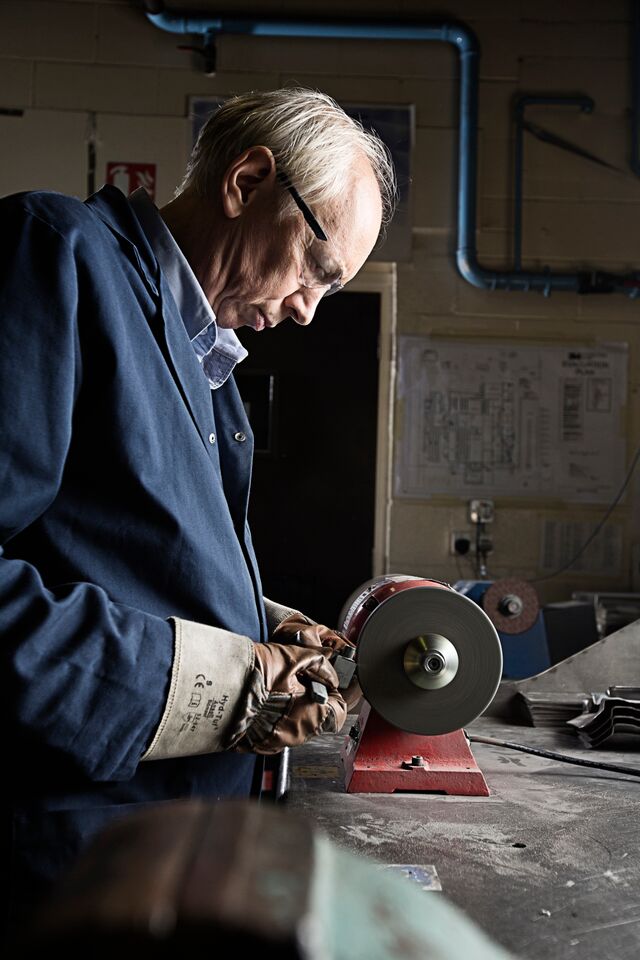
Selecting a deburr based on application
Heavier deburring
Some applications require a heavier deburring tool where the nature of the material or the type of cutting tool produces a heavier burr than normal. Unitised wheels such as Scotch-Brite Wheels offer non-directional, soft deburring without making a large radius. An additional benefit to using this method is that the wheels can be used on any metal. However, they have a shorter life and lower cut than convolute or moulded wheels so are best suited for larger burrs where more aggression is needed. The Scotch-Brite Unitised Wheels by 3M are made from a non-woven web interspersed with resin and mineral, which is then cured under pressure to form a slab from which the wheels are cut.
Lighter deburring
For lighter burrs convolute wheels offer a better solution than the unitised wheels mentioned above. Convolute wheels are wound onto a fibreglass core with a resin layer to form a 'bun' which is then cured in the oven. This offers a finer cut, softer density and a more even finish.
Stock removal and shaping
A replacement for rubber bonded wheels are moulded wheels, suitable for stock removal and shaping. For example they would be used to remove milling marks and taking out small mismatches from the machining process. They are more aggressive than unitised wheels and run more smoothly than rubber and bonded wheels with the result that they can produce the result more quickly with less vibration.
Light deburring, cleaning and surface preparation
Bristle brushes offer the most effective solution for applications such as cleaning rust and contamination in Maintenance Repair and Operation (MRO); removing coatings such as painted surfaces; weld cleaning; deburring complex shapes such as gears and turbine blade roots; and cleaning and/or deburring of threaded bolts. The Scotch-Brite Bristle Brushes by 3M are designed to offer additional safety benefits due to the abrasive-filled plastic brushes eliminating the risk of flying wires and conforming to contoured parts. Compared to wire or filament brushes, they can cut faster and more effectively meaning an overall increased production rate. The fresh mineral is exposed as it wears meaning there is a constant cut rather than the peening effect produced by the other products making Scotch-Brite Bristle Brushes by 3M more efficient.
Generally speaking, the finer more conformable bristle products are used for decorative finishing and will conform more readily to surface contours along with generating a more uniform finish. The coarser less conformable bristle products are therefore used for more difficult blending, cleaning, and deburring operations. Pressure and speed can also influence product life as well as performance. Lower pressure and speed means a lower cut and longer life and higher pressure and speed means a higher cut and shorter life. Too-high a pressure increases wear drastically.
When used in automated processes, lubricants or coolants are advised whenever possible to reduce heat and extend product life. All Scotch-Brite Products can be used with coolants such as water and some water-soluble oils - most reduce surface roughness. The higher viscosity lubricants produce lower surface roughness and grease produces a finer surface finish than oil.
Whether it be to match a production line rate, or find a more cost-effective method that offers an absolute deburr, choosing the right method or tool and matching it with the right abrasive product is absolutely critical.
Similar articles
More from 3M
- Smart electronic earplugs block only loud noises 4th September 2019
- Infrared sensor designed for detection of refrigerant gases 12th April 2018
- Scotland’s first new power conductor in almost 30 years goes live 25th January 2017
- Effective thermal management within electronic design 6th November 2015

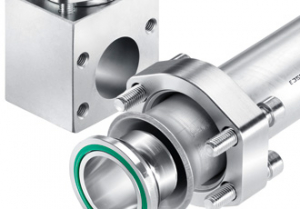
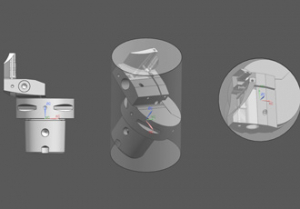
ed.jpg)
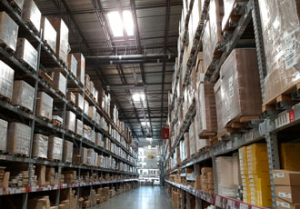







Write a comment
No comments